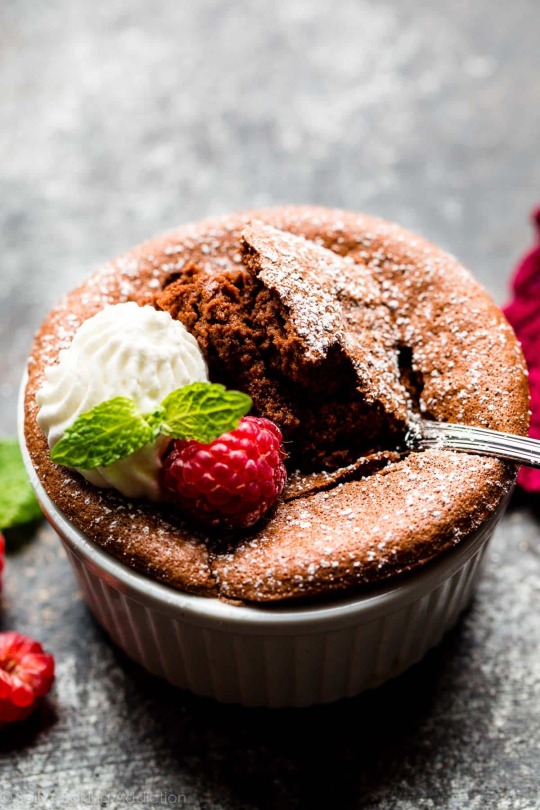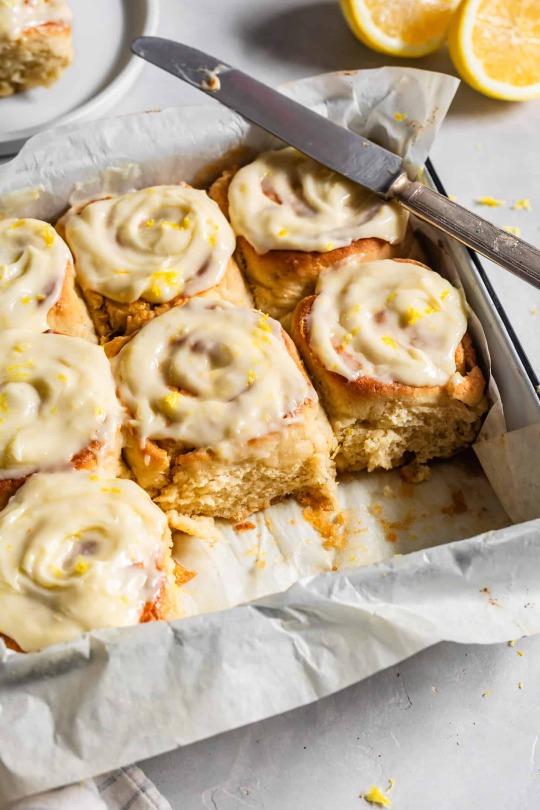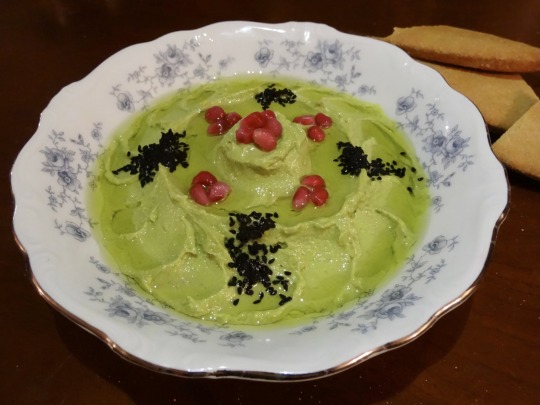#but is it gluten free?
Text
Sometimes I think about how at 13, my appendix ruptured and my body took aggressive action to save my life. My immune system contained the infection within an abscess apparently so robust and localized I didn’t even present with a fever or increased white blood cell count. It held steady for ten full days, fending off what could have easily become peritonitis or sepsis, before the rupture was detected and the abscess drained and removed in two procedures.
And now, as an adult, I have an autoimmune disease. My body takes aggressive action on my behalf-- against my own body. My immune system goes on the offense over the most harmless of things and will burn the entire house down rather than risk the perceived danger of certain “intruders.”
Does my body remember her trauma? Is my immune system forever on the alert because of what it has experienced? Does my body have her own form of PTSD independent of my consciousness?
I certainly don’t know if there’s any scientific validity in seeing a connection here, and my anthropomorphism of my immune system is more poetic than anything else-- but it’s a bittersweet image to think of my body trying desperately to “save” us, over and over again, growing bitter and paranoid like some disaffected veteran without the tools to reshape a trauma response.
#medical trauma#autoimmune disease#bodies#but is it gluten free?#tw: medical trauma#spurious anthropomorphism of the immune system
3 notes
·
View notes
Text
If you have celiac and buy the brand Van’s for their waffles, please know that 9 days ago there was a recall because some of the packages of the gluten free waffles may contain “undeclared” wheat. And if you have celiac, you know “may” might as well mean “does”.
This recall only applies to boxes with the matching lot codes and numbers, and do not pertain to other products that Van’s has to offer. These boxes were distributed in AZ, CA, FL, GA, IL, NC, & WA. Please check your boxes immediately to ensure your own safety and save yourself the painful reactions to gluten. It’s advised the purchased packages be either thrown out (or given to someone who can eat wheat so as not to waste it) or return the product to where you’ve purchased it from.

“The U.S. Food & Drug Administration website published the recall July 3. It applies to certain packs of Van's Gluten Free Original Waffles with lot code UW40193L, expiration date Jan. 19, 2024, and UPC 0 89947 30206 4. According to the Van's recall, some of the packs of waffles may contain undeclared wheat.”
#gluten free#celiac disease#coeliac disease#gluten intolerance#gluten allergy#food allergies#chronic illness#autoimmune disorders#celiac#important
10K notes
·
View notes
Text
Healthy Recipes - Monchef.recipes

Monchef.recipes presents a specially curated collection of recipes, tailored for health-conscious individuals and food enthusiasts. It boasts an extensive range of options including vegan, dairy-free, and gluten-free recipes, making it ideal for anyone with specific dietary needs or preferences. The collection focuses on combining nutrition with flavor, offering delicious and wholesome meal ideas for every occasion. Whether you're looking to expand your culinary repertoire or seeking new, healthy meal inspirations, Monchef.recipes provides a rich resource of tasty and nutritious recipes.
2K notes
·
View notes
Text
it’s disability pride month so i want to talk about one of my least favorite stigmas around celiac disease
in lots of media, being gluten free is played as a joke or something someone is to be annoying/pretentious. the amount of times i’ve heard jokes like that is honestly disheartening.
it also doesn’t help with the general population’s belief that celiac disease/gluten sensitivities are not serious. i’ve been diagnosed with celiac disease for 3 years now, i’ve been gluten free for about 4, and it has substantially improved my quality of life. i can’t afford risking cross-contamination because it leaves me sick for days. nearly every time i have a reaction to gluten, it’s hard for me to even drink water the next day because my body is an absolute mess. i’m miserable and fatigued for days until my body heals. not to mention the long term effects that have left me unable to stand/walk around for extended periods of time because my joints are pretty weak.
being gluten free NEEDS to be taken seriously. it’s not a choice i’ve made because i’m hoping on the latest fad, its not a preference, it’s an autoimmune disorder.
#tldr i’m sick of gluten free jokes made by people who aren’t gluten free#celiac disease#gluten free#disability pride month#invisible disability
3K notes
·
View notes
Text

Creamy Roasted Red Pepper Salmon
#food#recipe#dinner#salmon#bell pepper#peppers#tomatoes#spinach#coconut#paprika#fish#garlic#onions#rice#gluten free
880 notes
·
View notes
Text

GF Lemon Bars with Almond Flour Crust
#gluten free#lemon bars#lemon#bars#almond flour#crust#food#citrus#zest#easter#dessert#baking#summer#recipe#tapioca flour#tapioca#rice flour#bojongourmet
459 notes
·
View notes
Text



The Best Vegan Gluten-Free Lemon Bars
316 notes
·
View notes
Text

How to make chocolate soufflé
#chocolate#chocolate cake#souffle#sweet food#food#dessert#baking#sweet#chocolate souffle#cake#mini cake#gluten free#soufflé#tasty#foodporn#delicious#cooking#food photography#foodgasm#recipe
612 notes
·
View notes
Text

Lemon Rolls (GF)
236 notes
·
View notes
Text

[ID: A bowl of avocado spread sculpted into a pattern, topped with olive oil and garnished with symmetrical lines of nigella seeds and piles of pomegranate seeds; a pile of pita bread is in the background. End ID]
متبل الأفوكادو / Mutabbal al-'afukadu (Palestinian avocado dip)
Avocados are not native to Palestine. Israeli settlers planted them in Gaza in the 1980s, before being evicted when Israel evacuated all its settlements in Gaza in 2005. The avocados, however, remained, and Gazans continued to cultivate them for their fall and winter harvest. Avocados have been folded into the repertoire of a "new" Palestinian cuisine, as Gazans and other Palestinians have found ways to interpret them.
Palestinians may add local ingredients to dishes traditionally featuring avocado (such as Palestinian guacamole, "جواكامولي فلسطيني" or "غواكامولي فلسطيني"), or use avocado in Palestinian dishes that typically use other vegetables (pickling them, for example, or adding them to salads alongside tomato and cucumber).
Another dish in this latter category is حمص الافوكادو (hummus al-'afukadu)—avocado hummus—in which avocado is smoothly blended with lemon juice, white tahina (طحينة البيضاء, tahina al-bayda'), salt, and olive oil. Yet another is متبّل الأفوكادو (mutabbal al-'afukadu). Mutabbal is a spiced version of بابا غنوج (baba ghannouj): "مُتَبَّل" means "spiced" or "seasoned," from "مُ" "mu-," a participlizing prefix, + "تَبَّلَ" "tabbala," "to have spices added to." Here, fresh avocado replaces the roasted eggplant usually used to make this smooth dip; it is mixed with green chili pepper, lemon juice, garlic, white tahina, sumac, and labna (لبنة) or yoghurt. Either of these dishes may be topped with sesame or nigella seeds, pomegranate seeds, fresh dill, or chopped nuts, and eaten with sliced and toasted flatbread.
Avocados' history in Palestine precedes their introduction to Gaza. They were originally planted in 1908 by a French order of monks, but these trees have not survived. It was after the Balfour Declaration of 1917 (in which Britain, having been promised colonial control of Palestine with the dissolution of the Ottoman Empire after World War 1, pledged to establish "a national home for the Jewish people" in Palestine) that avocado agriculture began to take root.
In the 1920s, 30s, and 40s, encouraged by Britain, Jewish Europeans began to immigrate to Palestine in greater numbers and establish agricultural settlements (leaving an estimated 29.4% of peasant farming families without land by 1929). Seeds and seedlings from several varieties of avocado were introduced from California by private companies, research stations, and governmental bodies (including Mikveh Israel, a school which provided settlers with agricultural training). In these years, prices were too high for Palestinian buyers, and quantities were too low for export.
It wasn't until after the beginning of the Nakba (the ethnic cleansing of Palestinians from "Jewish" areas following the UN partition of Palestine in 1947) that avocado plantings became significant. With Palestinians having been violently expelled from most of the area's arable land, settlers were free to plant avocados en masse for export, aided (until 1960) by long-term, low-interest loans from the Israeli government. The 400 acres planted within Israel's claimed borders in 1955 ballooned to 2,000 acres in 1965, then 9,000 by 1975, and over 17,000 by 1997. By 1986, Israel was producing enough avocados to want to renegotiate trade agreements with Europe in light of the increase.
Israeli companies also attained commercial success selling avocados planted on settlements within the West Bank. As of 2014, an estimated 4.5% of Israeli avocado exports were grown in the occupied Jordan Valley alone (though data about crops grown in illegal settlements is of course difficult to obtain). These crops were often tended by Palestinian workers, including children, in inhumane conditions and at starvation wages. Despite a European Union order to specify the origin of such produce as "territories occupied by Israel since 1967," it is often simply marked "Israel." Several grocery stores across Europe, including Carrefour, Lidl, Dunnes Stores, and Aldi, even falsified provenance information on avocados and other fruits in order to circumvent consumer boycotts of goods produced in Israel altogether—claiming, for example, that they were from Morocco or Cyprus.
Meanwhile, while expanding its own production of avocados, Israel was directing, limiting, and destabilizing Palestinian agriculture in an attempt to eliminate competition. In 1982, Israel prohibited the planting of fruit trees without first obtaining permission from military authorities; in practice, this resulted in Palestinians (in Gaza and the West Bank) being entirely barred from planting new mango and avocado trees, even to replace old, unproductive ones.
Conditions worsened in the years following the second intifada. Between September of 2000 and September of 2003, Israeli military forces destroyed wells, pumps, and an estimated 85% of the agricultural land in al-Sayafa, northern Gaza, where farmers had been using irrigation systems and greenhouses to grow fruits including citrus, apricots, and avocados. They barred almost all travel into and out of al-Sayafa: blocking off all roads that lead to the area, building barricades topped with barbed wire, preventing entry within 150 meters of the barricade under threat of gunfire, and opening crossings only at limited times of day and only for specific people, if at all.
A July 2001 prohibition on Palestinian vehicles within al-Sayafa further slashed agricultural production, forcing farmers to rely on donkeys and hand carts to tend their fields and to transport produce across the crossing. If the crossing happened to be closed, or the carts could not transport all the produce in time, fruits and vegetables would sit waiting in the sun until they rotted and could not be sold. The 2007 blockade worsened Gaza's economy still further, strictly limiting imports and prohibiting exports entirely (though later on, there would be exceptions made for small quantities of specific crops).
In the following years, Israel allowed imports of food items into Gaza not exceeding the bare minimum for basic sustenance, based on an estimation of the caloric needs of its inhabitants. Permitted (apples, bananas, persimmons, flour) and banned items for import (avocados, dates, grapes) were ostensibly based on "necessary" versus "luxury" foods, but were in fact directed according to where Israeli farmers could expect the most profit.
Though most of the imports admitted into Gaza continued to come from Israel, Gazan farmers kept pursuing self-sufficiency. In 2011, farmers working on a Hamas-government-led project in the former settlements produced avocados, mangoes, and most of the grapes, onions, and melons that Gazans ate; by 2015, though still forbidden from exporting excess, they were self-sufficient in the production of crops including onions, watermelon, cantaloupe, grapes, almonds, olives, and apples.
Support Palestinian resistance by calling Elbit System’s (Israel’s primary weapons manufacturer) landlord, donating to Palestine Action’s bail fund, and donating to the Bay Area Anti-Repression Committee bail fund.
Ingredients:
2 medium avocados (300g total)
1/4 cup white tahina
2 Tbsp labna (لبنة), or yoghurt (laban, لبن رايب)
1 green chili pepper
2 cloves garlic
2 Tbsp good olive oil
Juice of 1/2 lemon (1 1/2 Tbsp)
1 tsp table salt, or to taste
Pomegranate seeds, slivered almonds, pine nuts, chopped dill, nigella seeds, sesame seeds, sumac, and/or olive oil, to serve
Khubiz al-kmaj (pita bread), to serve
Instructions:
1. In a mortar and pestle, crush garlic, pepper, and a bit of salt into a fine paste.
2. Add avocados and mash to desired texture. Stir in tahina, labna, olive oil, lemon juice, and additional salt.
You can also combine all ingredients in a blender or food processor.
3. Top with a generous drizzle of olive oil. Add toppings, as desired.
4. Cut pita into small rectangles or triangles and separate one half from the other (along where the pocket is). Toast in the oven, or in a large, dry skillet, stirring occasionally, until golden brown. Serve dip alongside toasted pita chips.

455 notes
·
View notes
Text
Has anyone encountered any Amish Friendship Bread recently? Was this a regional thing or a ‘90s thing? Is it “over?”
#not that I'd be able to participate these days#even though I've made my own starter before I bet no one wants to buy weird GF flours to sustain a gift starter#amish friendship bread#friendship bread#bread#bread starter#sourdough starter#baking#but is it gluten free?
1 note
·
View note
Text
i feel so bad for vampires like i would be evil too if i couldn’t eat garlic bread that’s so fucking sad. what a miserable existence omg.
#i guess when you think about it#gluten free people are like irl vampires#they can’t have garlic bread either#twilight#wait no twilight vampires can have garlic im pretty sure#castlevania#astarion baldur’s gate 3#um#vampire hunter d#idk other vampire media#WAIT#literally#dracula#the novel#by bram stoker
330 notes
·
View notes
Text

Reblog for cheap oatmeal waifu
307 notes
·
View notes
Text
For all the US-based folks, here's Celiac.com's annual GF candy list for 2023! Please remember (as always) to double check your ingredients, and contact the manufacturer with questions or concerns.
697 notes
·
View notes
Text

Blue Raspberry Lemonade
538 notes
·
View notes
Text

GF Lemon Ricotta Pancakes
#gluten free#lemon#ricotta#pancakes#food#breakfast#dessert#baking#recipe#citrus#zest#fruit#tapioca free#bojongourmet
415 notes
·
View notes